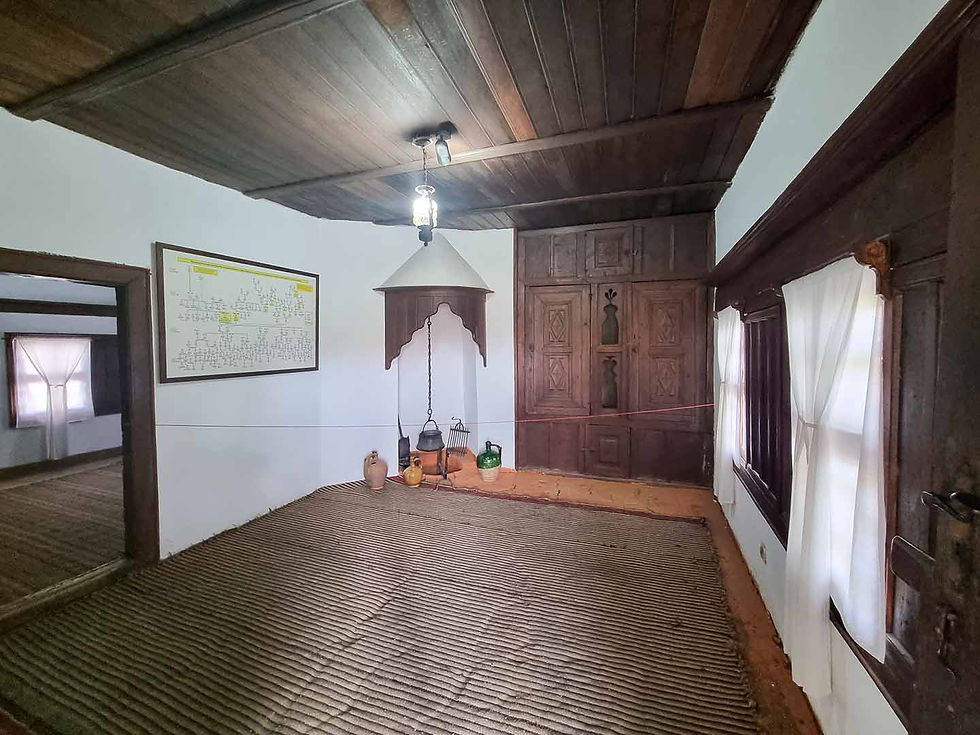Raina Knyaginya's childhood home
- Stefan Ivanov

- Jan 7, 2023
- 3 min read
Updated: Jan 20

My dear friends, it is with great pleasure that I will tell you about Raina Knyagina, about the flag that she exported and then waved next to Benkovski on the first day of the announcement of the uprising, while I take you around her native home in Panagyurishte.

Raina (Raikya) Popgeorgieva Futekova-Dipcheva, known today as Raina Knyaginya, was a Bulgarian teacher and midwife.

Raikya's father, Georgi Futekov, is a priest who works as a muftachian. He is a migrant from the village of Patalenitsa, Pazardzhik. During the April Uprising, at the age of 46, he was beheaded by the Turks in the middle of the yard of his house, where he was buried.

Futekovi's house is currently a museum and is a medieval type asymmetrical house with an open veranda. It is also the oldest architectural monument in Panagyurishte.
How do you get to Raina Knyaginya's birthplace house in Panagyurishte?
From the center of the city of Panagyurishte, take "Rayna Knyaginya" street, turning left at its intersection with "Oborishte" street (on "Rayna Knyaginya" square).
The birthplace of Raina Knyaginya is located about 140 meters from the "Raina Knyaginya" monument, located on "Raina Knyaginya" square.

The first construction period of the Futek house dates back to 1676, as evidenced by an inscription on the middle beam of the great gate. In this home lives the family of priest Georgi Futekov and Nona Nalbantska with their six children - Raikya, Anastas, Vasil, Maria, Pena and Zahari.
Raikya was born here on January 6 (old style) or January 18 (new style) in 1856.

On the ground floor, where Futekovi's workshop, also called the kerena, used to be, today you will find a rich material-documentary exhibition.
The photos on display, accompanied by explanatory notes, will take you to those memorable years when the Bulgarian people dared to face the long-standing tyranny of the enslaver - the times in which Raina Popgeorgieva Futekova-Dipcheva grew up. You will touch her personal belongings, sing heroic songs and see one of the flags sewn by her personally.

An invaluable exhibit is the main insurgent flag, which Raina Knyagina reproduced in 1901, when the first official celebration of 25 years of the April Uprising took place. The funds for the cloth and tinsel were provided by the "April 20, 1876" committee. It is sewn from red and green velvet with dimensions two meters by one and a half meters.
An enraged lion standing on its hind legs is embroidered with gold tinsel, stepping on the Turkish flag with a crescent moon and star, above the lion are written the words "Liberty or Death". In the right corner on the green side Raina exported her name Raina P. Georgieva, and on the other - Panagyurishte April 20, 1876-1901.
In fact, Raina sewed three new flags - replicas of the original. Only two of them are preserved today. One is the one I have presented to you, and which you can also see by visiting her native home, and the other is kept in the Military History Museum in Sofia.
The third flag burned during the bombing of the capital in World War II.
Climbing the wooden steps of her native home, we find ourselves on the second floor, where the living area is.

Entering the room on the right, you will find yourself in the middle of an ethnographic exhibition recreating the environment in which Raina was born and grew up.

In the next room, you will find the hiding place where twenty-year-old Raina Popgeorgieva hides the materials needed to sew the flag.
In the two small rooms on the left, you will see typical woolen mats and pillows of the time, goat rugs and fur rugs on the floor, traditional objects of home crafts, hearth utensils, dishes for preparing and eating food.
House-museum "Raina Princess" and historical area Oborishte are site number 36 of the 100 national tourist sites.
Have a nice walk!




















Comentários